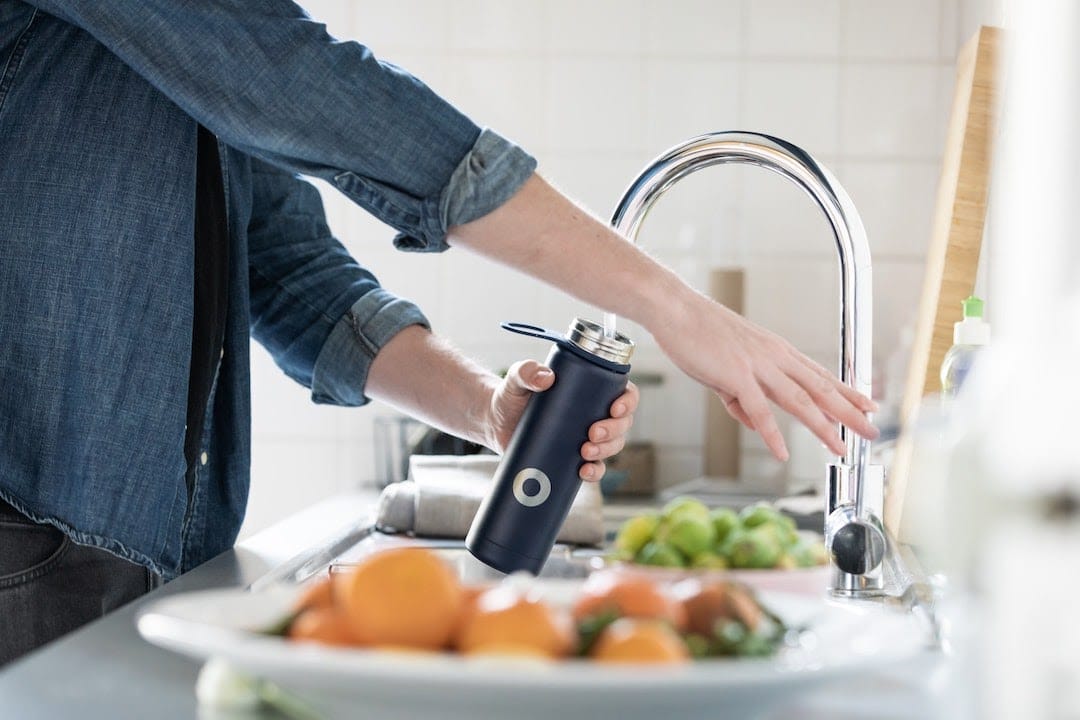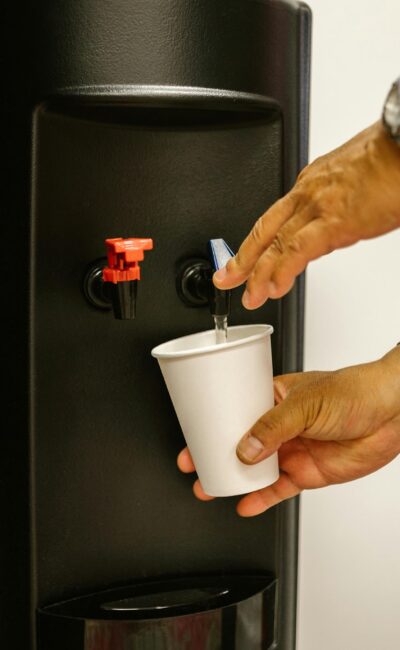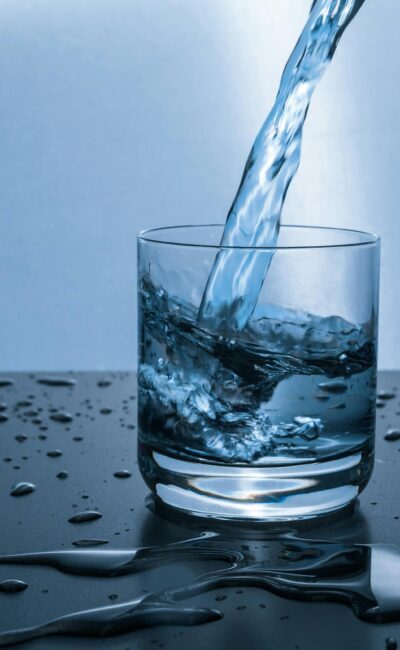Access to clean drinking water is a basic need. Despite the challenges that cities continue to have with contaminated water, there are solutions to provide people what they need to stay healthy. Fortunately, through modern technology, learning how to remove lead from water is made easier through water purification systems. Understanding the need for purification involves learning about the:
- History of problems with lead in drinking water;
- How lead gets into water;
- Identifying and reducing lead-contaminated water at the source; and
- Recommended processes for lead removal.
History of Problems with Lead in Drinking Water
For centuries, water systems have been made of lead because of its waterproof durability and ease of welding together. Despite this convenience, the damaging health consequences of lead exposure led to banning the use of it.
As early as the 1920s, several cities were prohibiting the use of lead pipes for carrying drinking water that resulted in lead poisoning.1 However, the use of lead in pipes and household plumbing materials continued, as uncertainty about how dangerous it truly was lingered.
Since then, the Environmental Protection Agency (EPA) has instituted amendments to the Safe Drinking Water Act and the Lead and Copper Rule to regulate the amount of lead in tap water. It has set the maximum contaminant level for lead in drinking water at zero due to its high toxicity and the level of harm it has on human health even at low exposures.2
Unfortunately, many public water systems still contain excess lead levels, other toxins, and harmful contaminants to this day. This leaves people to depend on alternative ways to get clean and safe drinking water on a consistent basis.
How Lead Gets Into Drinking Water
According to the Centers for Disease Control and Prevention (CDC), lead in drinking water is most commonly the result of lead pipes, faucets, and plumbing fixtures.2 This applies to municipal water systems, as well as older homes that may source their water from private wells.
As these water systems age, the lead pipes begin to corrode, which dissolves or wears away the metal and infiltrates the water supply. There are multiple factors the CDC outlines that determine the amount of lead that enters the water. Levels are dependent on:
- High acidity or alkalinity of the water supply
- Types and amounts of minerals in the water
- Water temperature
- Amount of lead that water comes into contact with
- Amount of pipe corrosion
- How long water stays in pipes
- Presence of protective scales or coatings in lead pipes
In 1991, the EPA published regulations to control both lead and copper in drinking water. It warned of health problems as a result of exposure to lead or lead poisoning, particularly for women who are pregnant and children.
Currently, the rule summary reads that copper and lead levels must be monitored in drinking water for the public. If the lead concentration exceeds a level of 15 ppb or copper exceeds a level of 1.3 ppm in more than 10 percent of a sampling of customer taps, the water system must undergo actions to control corrosion.3
Identifying and Reducing Lead Exposure in Water
Lead contamination in water doesn’t pose a distinct taste or smell, as with other harmful contaminants in your drinking water like sulfur or chlorine. And, since the act of corrosion causes lead to dissolve in the water, you aren’t able to visibly see it in water as it comes from the faucet. However, there are notable ways to identify the lead source and if it’s present in your water system.
First, knowing the age of water pipe systems is one way to determine if lead contamination is possible. However, even if lead pipes have been replaced with a newer system, the presence of lead soldering and brass or chrome-plated brass faucets can still contaminate the water. Brass is an alloy, with a combination made up mostly of copper and zinc. Depending on the age of these materials, lead may still be a main element used in brass.4
Second, if the building was constructed prior to 1978, lead-based paint was likely used.5 This increases the level of potential lead exposure. Since lead accumulates in the body over time, contamination from multiple sources can pose a greater threat to human health, even with minimal contact or exposure.
The third and likely best way to know of your lead exposure risk in drinking water is to ask to have your water tested. Building operators may already have access to these records or can contact a city’s water facilities to request the testing. As with older homes, older commercial buildings run the same risk of having outdated plumbing systems or fixtures made fully or partially with lead.
Reducing the Risk of Lead Contamination
It’s recommended to run a faucet for several minutes before drinking the water or cooking with it. The more time water has been sitting stagnant in pipes, the more lead it may contain. This is especially important for buildings that have temporarily been unused over the past year. With people returning to office buildings that have been largely unused, it is important to look into alternative water solutions such as an office water cooler to keep them healthy and hydrated.
Additionally, turn the tap to cold water before drinking or using it for food preparation. Hot water releases more lead from the pipes, and contrary to popular belief, boiling water does not result in lead removal from the liquid. The temperature change may actually increase them. To help combat the lead release from pipes, make sure to get a water purifier for office.
These are a few to reduce the risk of lead contamination, but relying on water purifying techniques is the only way to ensure lead has been removed from drinking water altogether. There are two main ways that are recommended to achieve this: reverse osmosis and distillation.7
 Reverse Osmosis and Distillation to Remove Lead from Water
Reverse Osmosis and Distillation to Remove Lead from Water
Knowing how to remove lead from water allows you to use your main water source without risk of contamination. Reverse osmosis and distillation are two of the main methods recommended by the CDC to accomplish this. The CDC also mentions the use of carbon filters specially designed as another possible water treatment technique.
1. Reverse Osmosis
The reverse osmosis process works as the name suggests. It reverses water flow in a natural process of osmosis, which allows water to pass through a semi-permeable membrane. This changes it from a higher concentrated solution to a more diluted one.8 The minute pore size of reverse osmosis systems makes it highly effective in removing chemical contaminants, such as lead, as well as bacteria and viruses also regularly found in tap water.
2. Distillation
When using distillation as part of a water treatment solution, this process involves heating water to a boiling point and collecting the condensation, leaving many contaminants behind. Distillation is also deemed highly effective by the CDC to remove lead in water, chromium, and other chemical contaminants. And, as with reverse osmosis, it’s used for removing bacteria and viruses. In fact, we cover reverse osmosis water benefits in great detail.
3. Activated Carbon Filters
Activated carbon water filters also work well for removing toxins and contaminants through adsorption. Carbon adsorbs organic molecules and traps them within the carbon pores, allowing clean water to pass through. Though useful, after a period of time, the surface of this type of drinking water filter becomes saturated and must be replaced to continue its effectiveness.9
Each of these water treatment methods on their own are deemed successful in removing lead from water, in addition to other pollutants found in tap water. Having these treatment processes available all in one system only increases the benefits of water purification.
FloWater’s Multi-Filtration Process Transforms Tap Water
Finding a reliable source of purified, great-tasting water requires a solution that’s healthy, cost-friendly, and convenient. Due to the technology that makes up the FloWater Refill Station, this is easily achieved. The Refill Station transforms tap water by removing up to 99 percent of impurities, including lead. It delivers clean, crisp drinking water accessible for businesses ranging from hotels and gyms to schools and hospitals.
The seven-stage water filtration system uses both the processes of reverse osmosis and active carbon filtration, while also adding back healthy electrolytes and minerals that are stripped away during these processes. It purifies the water and improves the taste of it at the same time, increasing the overall water quality.
Combining Carbon Filtration with Advanced Osmosis
The multi-filtration process starts with the sediment filter, which removes solid impurities that may exist in plumbing systems and make their way into your tap water. Second, the activated carbon filter removes smaller particles. These include hydrogen sulfide and chlorine.
Hydrogen sulfide is a result of a breakdown of bacteria and is often present in industrial and large farming operations. Chlorine is regularly used as a disinfectant by city water systems. Both carry unpleasant odors and tastes that affect the drinkability of tap water.
As the process moves into the advanced osmosis (AO) filtration stage, it captures smaller particles that may still linger after the first two steps. It uses a semi-permeable membrane to remove dissolved contaminants, including lead, heavy metals, bacteria, viruses, and other harmful pollutants. FloWater’s AO drinking water filter is five times more efficient than other reverse osmosis systems on the market.
To keep the filtered water system clean and sanitized, activated oxygen is added in small amounts. The naturally occurring molecule removes impurities and increases the amount of oxygen in the water, which benefits the body. This water filtration stage prevents the saturation that occurs more frequently with other water treatment device solutions. The final stages of the process, alkaline and electrolytes enhancements, add to the overall water quality to achieve the purest taste possible.
FloWater provides benefits on many different levels. Removing lead from lead contaminated water is one of the most significant ones. As businesses continue to evolve past using bottled water as its main source of clean drinking water, the FloWater Refill Station is a way to provide ongoing value to visitors and guests.
Sources:
- Rabin, MSPH, Richard. “The Lead Industry and Lead Water Pipes “A MODEST CAMPAIGN.” American Journal of Public Health, 2008. United States Library of Medicine – National Institutes of Health, doi:10.2105/AJPH.2007.11355.
- “Lead in Drinking Water.” Centers for Disease Control and Prevention, Centers for Disease Control and Prevention, 18 Nov. 2020, www.cdc.gov/nceh/lead/prevention/sources/water.htm.
- “Lead and Copper Rule.” EPA, Environmental Protection Agency, 10 Feb. 2021, www.epa.gov/dwreginfo/lead-and-copper-rule.
- “Toxics Release Inventory (TRI) GuideME.” EPA, Environmental Protection Agency, of mpub.epa.gov/apex/guideme_ext/f?p=guideme%3Agd%3A%3A%3A%3A%3Agd%3Alead_guidance_3_1.
- “Protect Your Family from Sources of Lead.” EPA, Environmental Protection Agency, 22 Dec. 2020, www.epa.gov/lead/protect-your-family-sources-lead.
- Let It Run…and Get the Lead out! Fact Sheet – EH: Minnesota Department of Health, www.health.state.mn.us/communities/environment/water/factsheet/letitrun_english.html.
- “Lead and Drinking Water from Private Wells.” Centers for Disease Control and Prevention, Centers for Disease Control and Prevention, 1 July 2015, www.cdc.gov/healthywater/drinking/private/wells/disease/lead.html.
- “Technical Information on Home Water Treatment Technologies.” Centers for Disease Control and Prevention, Centers for Disease Control and Prevention, 4 Aug. 2020, www.cdc.gov/healthywater/drinking/home-water-treatment/household_water_treatment.html.
- “Facts About Activated Carbon” EPA, Environmental Protection Agency, June. 1992, https://semspub.epa.gov/work/01/6847.pdf




